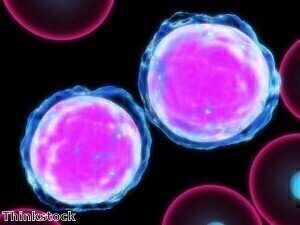Bioanalytical
Biochemistry researchers capture major chemotherapeutic target with DNA damage
May 11 2012
Biochemistry researchers have managed to capture a major chemotherapeutic target in complex with DNA damage, which could make significant breakthroughs in combating cancer.
John M. Pascal, Ph.D., an assistant professor in the Department of Biochemistry and Molecular Biology at Thomas Jefferson University and Jefferson's Kimmel Cancer Center, has revealed the new target sites for drugs aiming to stop PARP-1 activity. His study has been published in Science, and sheds light on the enzyme which when inhibited has been shown to be effective in fighting cancer and other diseases.
The investigation has revealed new targets that can be pursued, including specialized "zinc finger" domains for drugs aiming to stop PARP-1 activity. If researchers can identify more specific PARP-1 inhibitors that achieve a targeted inhibition, there will be less potential for side effects and also potential for treating inflammation and cardiac disease.
Dr. Pascal said: "PARP-1 has been identified as a valuable target, but what's special about it? What really are its weak points in the way it gets activated?
"We wanted to define a structural and mechanistic framework to better understand how to specifically inhibit PARP-1."
He continued to explain that multi-domain interfaces which are uniquely found in PARP-1 were found to be the weak points. Researchers have already established that multiple domains of PARP-1 come together and bind to DNA damage, and that this communication between domains is essential for DNA damage-dependent PARP-1 activity.
Inhibitors for PARP-1 are being tested which target the catalytic active site. However, this can be quite limiting and can increase the chances of side effects. The researchers in this study used X-ray crystallography to study the interaction amongst the component domains of PARP-1 and their combined role in binding to DNA damage.
They found that there was a network of interdomain contacts formed upon DNA binding in the PARP-1/DNA structure. These assemble and have catalytic activity, the researchers found. Dr Pascal said:"Our work indicates that we should be looking for inhibitors that prevent these domains from coming together.
"Rather than screen for inhibitors with catalytic activity as a readout, we can screen for inhibitors that disrupt the communication between the PARP-1 domains, which would in turn shut down catalytic activity."
Posted by Ben Evans
Digital Edition
Chromatography Today - Buyers' Guide 2022
October 2023
In This Edition Modern & Practical Applications - Accelerating ADC Development with Mass Spectrometry - Implementing High-Resolution Ion Mobility into Peptide Mapping Workflows Chromatogr...
View all digital editions
Events
May 05 2024 Seville, Spain
May 15 2024 Birmingham, UK
May 19 2024 Brno, Czech Republic
May 21 2024 Lagos, Nigeria
May 23 2024 Beijing, China














